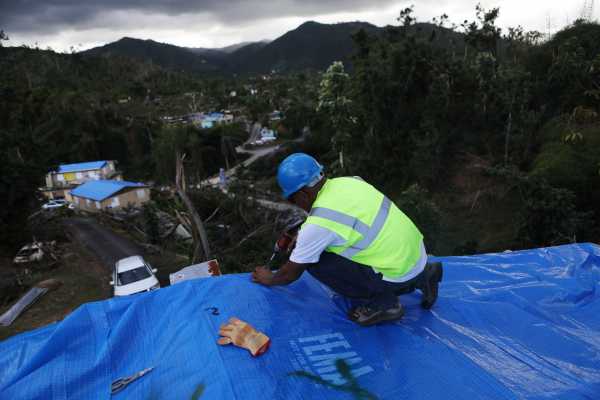
The United States is still reeling from last year’s megadisasters. Puerto Rico lingers in the longest blackout in US history after Hurricane Maria tore through the island, and the scorched earth left behind from record-breaking fires in California is now causing floods and mudslides.
The Federal Emergency Management Agency, which was on the front lines of many of these calamities, had to go back to Congress last September to ask for billions more dollars to handle the gargantuan relief efforts.
With some of the dust settled, it’s clear that the events in 2017 fit the pattern of extreme weather we expect as average global temperatures go up, with strong climate change signals emerging in fires and rainfall.
FEMA has, and will continue to, respond to climate change-influenced disasters. But the agency’s new strategic plan for 2018-2022, released Thursday, doesn’t mention climate change or global warming at all. That’s despite the fact that the 38-page document projects more frequent and more expensive disasters. This is a glaring omission from an agency that deals with anticipating and responding to weather extremes driven in part by a changing climate.
The damages from the hurricanes, heat waves, wildfires, and tornadoes in 2017 cost at least $306 billion.
“Disaster costs are expected to continue to increase due to rising natural hazard risk, decaying critical infrastructure, and economic pressures that limit investments in risk resilience,” according to the document.
FEMA did signal that it wants to invest more in “pre-disaster mitigation,” which may or may not include climate change. But it wasn’t so coy in its previous 2014-2018 strategic plan, which noted that the agency “will also ensure that future risks, including those influenced by climate change, are effectively integrated into the Agency’s risk assessment resources and processes.”
Dropping climate change from FEMA’s strategic plan is just the latest part of the Trump administration’s long pattern of erasing climate change as a public policy issue across the federal government. Agencies including the Department of Energy, the Environmental Protection Agency, and the Department of the Interior have removed climate change language from many of their websites. Other agencies have limited access to policy and technical documents dealing with climate change. And some government research grant applications faced extra scrutiny and rejection for mentioning the “double C-word.”
It’s not just rhetoric. President Trump wants the United States to back out of the Paris climate agreement, and the EPA is working to undo the main policy for restricting greenhouse gases, the Clean Power Plan. The White House’s latest budget proposal seeks a 72 percent cut to clean energy research and reduces FEMA’s budget by almost $600 million from $16.1 billion.
The recent personnel shake-up across the federal government doesn’t bode well for the fight against climate change either. Rex Tillerson, who was fired as secretary of state this week, wanted the United States to remain in the Paris deal. His likely replacement, Mike Pompeo, doesn’t believe humanity is warming the planet. And former White House adviser George David Banks, who suggested that Trump could rejoin the Paris agreement, resigned last month after he failed to get a security clearance due to past marijuana use.
The net result is that the Trump administration is doing little to either mitigate or adapt to rising temperatures. And now homeowners, many of whom received disaster relief money from FEMA, are rebuilding in floodplains and high-fire-risk areas.
It seems FEMA doesn’t want to build on this history of climate disasters. Now it looks like we’re condemned to repeat it.
Sourse: vox.com






